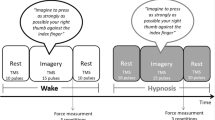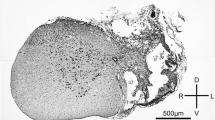Abstract
EXPERIMENTS on rats show that if the organism is severely damaged by acute non-specific nocuous agents such as exposure to cold, surgical injury, production of spinal shock (transcision of the cord), excessive muscular exercise, or intoxications with sublethal doses of diverse drugs (adrenaline, atropine, morphine, formaldehyde, etc.), a typical syndrome appears, the symptoms of which are independent of the nature of the damaging agent or the pharmacological type of the drug employed, and represent rather a response to damage as such.
Similar content being viewed by others
Article PDF
Author information
Authors and Affiliations
Rights and permissions
About this article
Cite this article
SELYE, H. A Syndrome produced by Diverse Nocuous Agents. Nature 138, 32 (1936). https://doi.org/10.1038/138032a0
Issue Date:
DOI: https://doi.org/10.1038/138032a0
This article is cited by
-
Central stress pathways in the development of cardiovascular disease
Clinical Autonomic Research (2024)
-
Unmet needs of drugs for irritable bowel syndrome and inflammatory bowel diseases: interest of vagus nerve stimulation and hypnosis
Inflammopharmacology (2024)
-
Cold adaptation and response genes of Antarctic Cryobacterium sp. SO2 from the Fildes Peninsula, King George Island
Polar Biology (2024)
-
Exploring symptom-level associations between anxiety and depression across developmental stages of adolescence: a network analysis approach
BMC Psychiatry (2023)
-
The connection between stress, density, and speed in crowds
Scientific Reports (2023)



